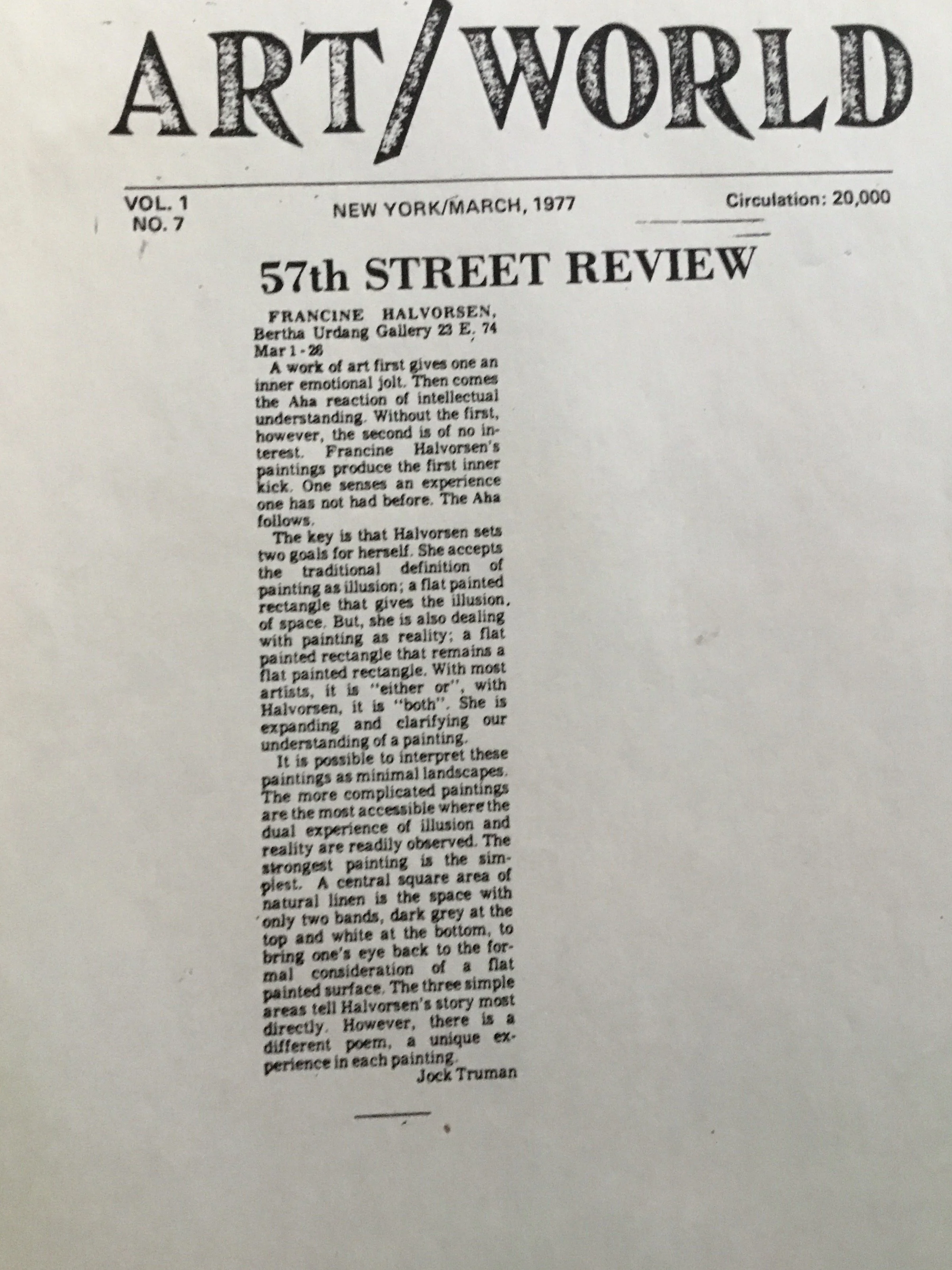"Now we speak of the effect of lights. Some are of stars… some of lamps and fire.” L. B. Alberti
There was a time when the universe was opaque; a period of compacted light.
As life evolved and a palpable humanity appeared a transparent light expanded and filled space. The reception of this light was innocent from the brightest white to the darkest shadow. I want to reclaim the immediacy of that light. The time of origin is always now.
I want the canvas to a place of convergence of the source of light and the habitable present. A clearing, a breathing space where each viewing is a new and direct experience. I make the paintings not as signs but places.
Each work in the series is oil paint on studio prepared linen, stretched over rigid strainers constructed with expansion joints to keep the surfaces taut through extremes of humidity. In this year's work I want to push the achromatic palette until it brims over with irreducible light. It is an encounter with the limitations of surface and edge and opens the space beyond those boundaries to rediscover the communion between a temporal presence and an expansive content.
Each painting reflects innumerable echoes and afterimages, as filled with itself as a landscape. I want to generate not only a visual impression but a place, lucid and generous, first seen in the eye/I of the painter and then by the viewer, caught unaware, as when walking you see yourself reflected in some surface that causes you to pause, stop still, and look at the view.
Francine Halvorsen
ARTFORUM
Summmer 1977
Judith Lopes Cardozo
on Francine Halvorsen
at the Bertha Urdang Gallery
Francine Halvorsen’s drawings and paintings are the result of ritualizing chirography on paper, or the very rectangular space of the canvas. The drawings, graphite on Arches paper, consist of small, handwriting-sized marks, squares, “U”s like fingernail impressions, all repeated in hypnotic succession creating both straight and drifting lines. The paintings, oil on 4’ by 6’ linen canvases, are each horizontally subdivided into different ratios of white, black, gray and unpainted bands. A drawing ethic prevails; every inch is intimately worked: the white paint is either slathered on like thinned taffy or so diluted that it mottles, letting the canvas show through. The segments which are not painted are nonetheless toyed with by being primed.
On close inspection, both the drawings and the paintings are tense with a tactile involvement, but when one pulls back, there is almost an elimination of details; a sense of anonymity pervades. From a distance, the rows of compulsively repeated marks in the drawings appear to be strands of fiber in an eaten-way fabric, a nameless fragment. The punctiliousness of proportion in the paintings becomes the result of calculation rather than involvement. It is this entanglement and extrication, the closeness and the distance, which either makes Halvorsen’s works truly profound or renders them inert.
At times it is not quite clear whether she is trying to overcome the paint, tool or the surface. This ambivalence is forgivable and actually productive in the drawings because the confrontation between pencil and paper is, and will always be, a face-off. In the paintings however, this struggle either resolves to produce a heavy, filled silence, or continues unresolved, blanketed beneath horizontal segments of paint. The more successful paintings therefore are those which transpose the dynamics of drawn color to the painted surface. Graphite gray, which is used in some of the painted works, softens and lubricates the dryness of the mathematical segmentation, while the pitch black bands heighten its severity.
